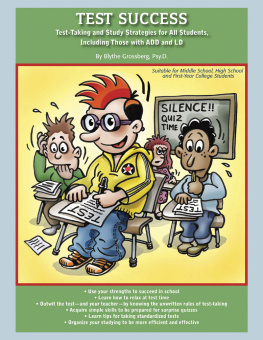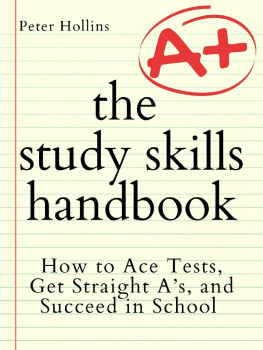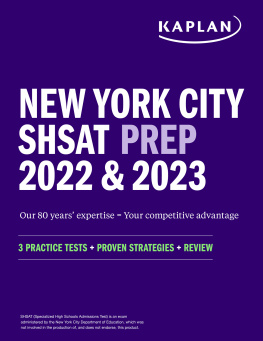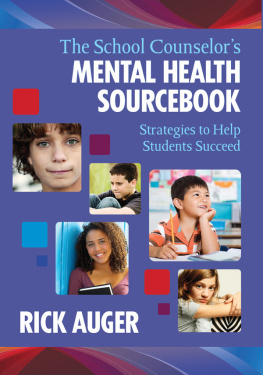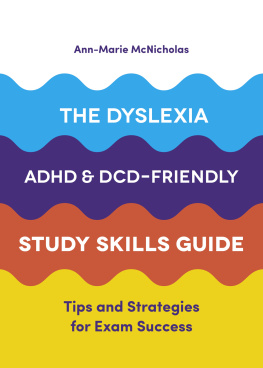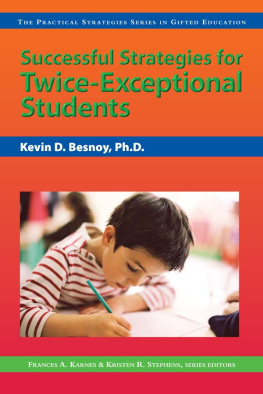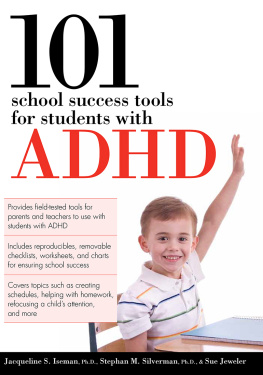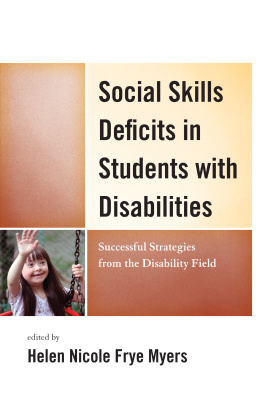Copyright Blythe Grossberg, Psy.D., 2009.
All rights reserved.
All rights reserved. Except as permitted under the United States Copyright Act of 1976, no part of this publication may be reproduced or distributed in any form or by any means, or stored in a database or retrieval system, without the prior written permission of the publisher.
For more information please contact the publisher.
Specialty Press. Inc.
300 N.W. 70th Avenue, Suite 102
Plantation, Florida 33317
(954) 792-8100 (800) 233-9273
www.addwarehouse.com
Library of Congress Cataloging-in-Publication Data.
Grossberg, Blythe N.
Test Success: Test-Taking and Study Strategies for All Students, Including Those with ADD and LD / Blythe Grossberg.
p. cm.
ISBN 978-1-886941-72-4 (alk. paper)
1. Test-taking skills-Juvenile literature. 2. Examinations-Study guides-Juvenile literature. I. Title.
LB3060.57.G76 2009
371.26--dc22
2008034179
About the Author
Blythe Grossberg, Psy.D., is the Upper School learning specialist at the Collegiate School in New York City. She has worked with students in grades 5-12 to help them be more effective at school. Her previous book is Making ADD Work: On-the-Job Strategies for Coping with Attention Deficit Disorder (Perigee, 2005).
Table of Contents
Sample History Notes
Real-life Strategies
Chapter One:
Shopping for a Learning Style

Discover Your Learning Style: Finding the Perfect Fit
This book starts with a shopping expedition. Youll get to try on different learning styles and decide which one suits you best. Instead of finding the best fit for a new pair of sneakers, youll be looking for the way of studying thats the most natural to you. Just as you feel most comfortable in the pair of shoes that conforms best to your foot, youll feel the most comfortable studying for tests if you find the way of learning that conforms to the way your mind works. The idea behind shopping for a learning style is that you can bring a lot of yourself to the process of studying for and taking tests. Throughout this book, you will find strategies that work for you. You can pick and choose the tips that you think will work, and you dont have to try those you think arent right for you.
Make sense of your senses: Understanding how you primarily take in information.
The first step in customizing the way you learn is to understand how you take in information. People vary in which sense they prioritize when absorbing new material. Some people remember information best when they see it. These types of learners are visual in nature. Other people are auditory learners who tend to recall information that they hearthese are the types of students who often compose songs to study for tests. Finally, there are students who are kinesthetic and have to use their bodies to act out information. They remember best what they donot what they see or hear.
We of course use all our senses all the time, but we may favor one over the other. To understand which type of learner you are, start by taking this short test. Dont worrythis is the fun sort of test that tells you more about yourself (and what could be more interesting?). After the test, youll learn how to use your primary sense to make studying more interesting and to recall the information with greater ease.
SHOP FOR YOUR STYLE:
Are you an auditory, visual, or kinesthetic learner?
Place a check mark next to the statements that describe you.
Auditory learners:
- I remember words when they are put to a beat or to music.
- I remember material that I hear presented aloud without taking any notes.
- I prefer spoken directions over written directions.
- I dont often understand diagrams or graphs without an explanation.
- I like to talk through problems.
Visual Learners:
- I prefer written directions rather than oral directions.
- I like to take notes to understand material.
- I understand graphs and charts.
- I remember what I read.
- I like to use color to remember material.
Kinesthetic Learners:
- Im good at building objects.
- I can put together puzzles easily.
- Im constantly gesturing with my hands.
- Once I do an activity, I remember how to do it.
- I dont often remember what was said or seen.
Count up the number of check marks.
- Auditory: ____
- Visual: ____
- Kinesthetic: ____
Which type of learner are you? _____________________________
Does this news surprise you? ______________________________
Read below to find out more about your learning style and how to use your style to make studying easier and more enjoyable. If you have two primary learning styles or one primary learning style with a close second, read the potential strategies for both styles.
CUSTOMIZE YOUR STUDY TECHNIQUES
Auditory Learners
If you are primarily an auditory learner, you need to hear material to remember it. You may enjoy music, and putting information into the form of a song may help you recall it. In school, you may be the kind of student who has to hear the information presented aloud in class to have it stick in your mind. Discussion-oriented classes may help you retain the material, and you may find yourself playing through what was said in class as if it were a soundtrack.
Here are some techniques that can help you learn in the classroom and study at home. Place check marks next to those you think will help you:
- Make up songs to remember material, such as historical dates or vocabulary words.
- Talk through information, or engage in a discussion about the material.
- Listen to books on tape, which are available at stores or through Recordings for the Blind and Dyslexic (see Helpful Books and Websites at the end of the book).
- Repeat information aloud for as many times as it takes you to remember it.
- Use language to explain complicated graphs or diagrams.
- Record classes (if acceptable to your teacher) and play them back while studying.
- Use your iPod or MP3 Player to record material and listen to it repeatedly.
Visual Learners:
If you are a visual learner, you recall what you see. You most likely learn well when teachers write information on the board, and when you take notes. You need to make study guides that involve writing out the material. In addition, you can use tools such as semantic maps that make visual connections between different parts of the material. Here is a simple kind of semantic map of the U.S. federal court system:

Next page
